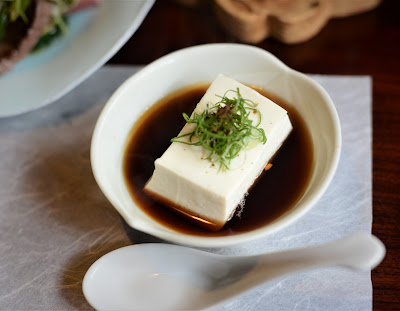 |
| We are starting our tour of the Arashiyama District in Kyoto |
The world famous Arashiyama Bamboo Grove is very enchanting because of the emanating green glow in the sky along with the peace and serenity of the famous Tenryuji Temple. Just fabulous to view and experience!
Thanks to our artist friend Isa Masayuki's help, we not only had a chance to visit his art studio but also visit the kimono dyeing artist, Shi Matsumoto in Arashiyama. In addition, we saw Japan's famous dyeing master Okuda Yusai's dyeing room, Yumeyusai-tei. This was very cool because it was originally the home of Emperor Sui, and he also has his exhibition hall here.
The Togetsu-kyo Bridge has been a landmark in Western Kyoto's Arashiyama District for over four hundred years, so we wanted to visit this site. The bridge is a wooden one, over 150 meters long, that crosses the Katsura River, offering incredible views year round. This famous bridge was named from Emperor Kameyama's reign from (1185–1333 AD). He was in awe that on a clear evening sky, it seemed that the moon looked like it was crossing over the bridge. (The name "Togetsu-kyo" is translated to mean "Moon-crossing Bridge"). We were told that the original bridge was actually built in the Jowa period around (834~848 AD).
 |
Togetsu-kyo Bridge the landmark of Arashiyama ( Special thanks to Irene & Calvin for this beautiful images.) |
The Tenryuji Temple is the most important temple in this part of Kyoto. It was ranked first among the city's five great Zen temples, and is now a world heritage site.
Tenryuji is the main temple of the Rinzai Zen sect of Japanese Buddhism. Tenryuji was built in 1339AD by the ruling shogun Ashikaga Takauji. Takauji dedicated the temple to Emperor Go-Daigo, who had recently died. Shogun Takauji believed if he built the temple, he might make amends and make peace with Emperor Go-Daigo spirit's.
Tenryuji is the main temple of the Rinzai Zen sect of Japanese Buddhism. Tenryuji was built in 1339AD by the ruling shogun Ashikaga Takauji. Takauji dedicated the temple to Emperor Go-Daigo, who had recently died. Shogun Takauji believed if he built the temple, he might make amends and make peace with Emperor Go-Daigo spirit's.
Also we were told to be sure and learn more about the Iwatayama Money Park on a slope section of Mount Arashiyama. There are hundreds of wild monkeys that live here but they are used to seeing humans and getting feed by them. Of course most tourists and visitors love to take pictures of these monkeys.
 |
| Arashiyama Park Kameyama Area is a popular tourist place |
 |
| Japan's famous dyeing master Okuda Yusai's dyeing room, Yumeyusai-tei |
 |
| Koro-zen is very unique because the color will change by shining different lights on the material. |
His most spectacular exhibits are the fabrics that he created and uses in the "Dream of the Dream" technique. This special fabric technique will change color under natural light and under white heat lamps. He calls this technique: "the only sun in the world".
Another special fabric material is known as Koro-zen, or
Forbidden color. It is a very old, secret dyeing method (over1000 years old). This material is used
only Emperor's formal jacket (Ho) and was recently rediscovered and upgraded
by Mr. Okuda Yusai in Kyoto. Originally only one color was kin-cha, or yellowish brown. He now has learned to make other colors. There are two special effects that make this material so very unique. First, the
color will change by shining different lights on the material, and second, a red circle (sun) will appear
when a light comes from the back of the material.
 |
| We enjoy the great Tofu cuisine at famous Shoraian restaurant. |



























































No comments:
Post a Comment